QuantumComputing
ANewEraofComputing
KuldeepSinghKaswan GalgotiasUniversity UttarPradesh,India
JagjitSinghDhatterwal KLDeemedtobeUniversity AndhraPradesh,India
AnupamBaliyan ChandigarhUniversity Punjab,India
ShalliRani
ChitkaraUniversityInstituteofEngineering India
Contents
Preface xiii
AuthorBiography xv
1IntroductionofQuantumComputing 1
1.1Introduction 1
1.2WhatIstheExactMeaningofQuantumComputing? 2
1.2.1WhatIsQuantumComputinginSimpleTerms? 2
1.3OriginofQuantumComputing 3
1.4HistoryofQuantumComputing 5
1.5QuantumCommunication 19
1.6BuildQuantumComputerStructure 19
1.7PrincipleWorkingofQuantumComputers 21
1.7.1KindsofQuantumComputing 21
1.8QuantumComputingUseinIndustry 23
1.9InvestorsInvestMoneyinQuantumTechnology 24
1.10ApplicationsofQuantumComputing 26
1.11QuantumComputingasaSolutionTechnology 29
1.11.1QuantumArtificialIntelligence 29
1.11.2HowCloseAreWetoQuantumSupremacy? 30
1.12Conclusion 30 References 31
2ProsandConsofQuantumComputing 33
2.1Introduction 33
2.2QuantumasaNumericalProcess 33
2.3QuantumComplexity 34
2.4TheProsandConsoftheQuantumComputationalFramework 36
2.5FurtherBenefitsofQuantumComputing 37
2.6FurtherDrawbackstoQuantumComputing 38
2.7IntegratingQuantumandClassicalTechniques 38
2.8FrameworkofQRAM 39
2.9ComputingAlgorithmsintheQuantumWorld 40
2.9.1ProgrammingQuantumProcesses 42
2.10ModificationofQuantumBuildingBlocks 42 References 43
3MethodsandInstrumentationforQuantumComputing 45
3.1BasicInformationofQuantumComputing 45
3.2SignalInformationinQuantumComputing 47
3.3QuantumDataEntropy 47
3.4BasicsofProbabilityinQuantumComputing 50
3.5QuantumTheoremofNo-Cloning 52
3.6MeasuringDistance 53
3.7FidelityinQuantumTheory 58
3.8QuantumEntanglement 62
3.9InformationContentandEntropy 66 References 71
4FoundationsofQuantumComputing 73
4.1Single-Qubit 73
4.1.1PhotonPolarizationinQuantumComputing 73
4.2Multi-qubit 76
4.2.1BlocksofQuantumStates 76
4.2.2SubmissionofVectorSpaceinQuantumComputing 77
4.2.3VectorSpacinginQuantumBlocks 77
4.2.4Statesof n-QubitTechnology 79
4.2.5StatesofEntangled 81
4.2.6ClassicalMeasuringofMulti-Qubit 84
4.3MeasuringofMulti-Qubit 87
4.3.1MathematicalFunctionsinQuantumOperations 87 Example 88
4.3.2OperatorMeasuringQubitsProjection 89
4.3.3TheMeasurementPostulate 94
4.3.4EPRParadoxandBell’sTheorem 99
4.3.5LayoutofBell’sTheorem 101
4.3.6StatisticalPredicatesofQuantumMechanics 101
4.3.7PredictionsofBell’sTheorem 102
4.3.8Bell’sInequality 103
4.4StatesofQuantumMetamorphosis 105
4.4.1SolitaryStepsMetamorphosis 106
4.4.2IrrationalMetamorphosis:TheNo-CloningPrinciple 107
4.4.3ThePauliTransformations 109
4.4.4TheHadamardMetamorphosis 109
4.4.5Multi-QubitMetamorphosisfromSingle-Qubit 109
4.4.6TheControlled-NOTandOtherSinglyControlledGates 110
4.4.7OpaqueCoding 113
4.4.8BasicBitsinOpaqueCoding 114
4.4.9QuantumMessageTeleportation 114
4.4.10DesigningandConstructingQuantumCircuits 116
4.4.11SingleQubitManipulatingQuantumState 116
4.4.12ControllingSingle-QubitMetamorphosis 117
4.4.13ControllingMultiSingle-QubitMetamorphosis 117
4.4.14SimpleMetamorphosis 119
4.4.15UniqueSetupGates 121
4.4.16TheStandardCircuitModel 122 References 123
5ComputationalAlgorithmDesigninQuantumSystems 125
5.1Introduction 125
5.2QuantumAlgorithm 125
5.3Rule1Superposition 126
5.4Rule2QuantumEntanglement 130
5.5Rule3QuantumMetrology 132
5.6Rule4QuantumGates 133
5.7Rule5Fault-TolerantQuantumGates 134
5.8QuantumConcurrency 138
5.9Rule7QuantumInterference 139
5.10Rule8QuantumParallelism 141
5.11Summary 143 References 144
6OptimizationofanAmplificationAlgorithm 145
6.1Introduction 145
6.2TheEffectofAvailabilityBias 146
6.2.1OptimizationofanAmplificationAlgorithm 147
6.2.2SpecificationsoftheMathematicalAmplificationAlgorithm 149
6.3QuantumAmplitudeEstimationandQuantumCounting 149
6.4AnAlgorithmforQuantitativelyDeterminingAmplitude 150
6.4.1MathematicalDescriptionofAmplitudeEstimationAlgorithm 151
6.5CountingQuantumParticles:AnAlgorithm 151
6.5.1MathematicalDescriptionofQuantumCountingAlgorithm 152
8.3.3Steane’sCodeFault-TolerantGates 204
8.3.4MeasurementwithFaultTolerance 206
8.3.5ReadyingtheStateforFaultTolerance 207
8.4TheStrengthofQuantumComputation 208
8.4.1CombinatorialCoding 208
8.4.2AThresholdTheorem 210 References 211
9CryptographyinQuantumComputing 213
9.1IntroductionofRSAEncryption 213
9.2ConceptofRSAEncryption 214
9.3QuantumCipherFundamentals 216
9.4TheControlled-NotInvasionasanIllustration 219
9.5CryptographyB92Protocol 220
9.6TheE91Protocol(Ekert) 221 References 221
10ConstructingClustersforQuantumComputing 223
10.1Introduction 223
10.1.1StateofClusters 223
10.2ThePreparationofClusterStates 224
10.3NearestNeighborMatrix 227
10.4StabilizerStates 228
10.4.1Aside:EntanglementWitness 230
10.5ProcessinginClusters 231 References 233
11AdvanceQuantumComputing 235
11.1Introduction 235
11.2ComputingwithSuperpositions 236
11.2.1TheWalsh–HadamardTransformation 236
11.2.2QuantumParallelism 237
11.3NotionsofComplexity 239
11.3.1QueryComplexity 240
11.3.2CommunicationComplexity 241
11.4ASimpleQuantumAlgorithm 242
11.4.1Deutsch’sProblem 242
11.5QuantumSubroutines 243
11.5.1TheImportanceofUnentanglingTemporaryQubitsinQuantum Subroutines 243
11.5.2PhaseChangeforaSubsetofBasisVectors 244
x Contents
11.5.3State-DependentPhaseShifts 246
11.5.4State-DependentSingle-QubitAmplitudeShifts 247
11.6AFewSimpleQuantumAlgorithms 248
11.6.1Deutsch–JozsaProblem 248
11.6.2Bernstein–VaziraniProblem 249
11.6.3Simon’sProblem 252
11.6.4DistributedComputation 253
11.7CommentsonQuantumParallelism 254
11.8MachineModelsandComplexityClasses 255
11.8.1ComplexityClasses 257
11.8.2Complexity:KnownResults 258
11.9QuantumFourierTransformations 260
11.9.1TheClassicalFourierTransform 261
11.9.2TheQuantumFourierTransform 263
11.9.3AQuantumCircuitforFastFourierTransform 263
11.10Shor’sAlgorithm 265
11.10.1CoreQuantumPhenomena 266
11.10.2PeriodicValueMeasurementandClassicalExtraction 267
11.10.3Shor’sAlgorithmandItsEffectiveness 268
11.10.4TheEfficiencyofShor’sAlgorithm 269
11.11OmittingtheInternalMeasurement 270 11.12Generalizations 271
11.12.1TheProblemofDiscreteLogarithms 272
11.12.2HiddenSubgroupIssues 272
11.13TheApplicationofGrover’sAlgorithmIt’sTimetoSolveSome Difficulties 274
11.13.1ExplanationoftheSuperpositionTechnique 275
11.13.2TheBlackBox’sInitialConfiguration 275
11.13.3TheIterationStep 276
11.13.4VariousofIterations 277
11.14EffectiveStateOperations 279
11.14.12DGeometry 281
11.15Grover’sAlgorithmandItsOptimality 283
11.15.1ReductiontoThreeInequalities 284
11.16AmplitudeAmplificationusingDiscreteEventRandomizationof Grover’sAlgorithm 286
11.16.1AlteringEachProcedure 286
11.16.2LastStageVariation 287
11.16.3Solutions:PossiblyInfinite 288
11.16.4VaryingtheNumberofIterations 289
11.16.5QuantumCounting 290
11.17ImplementingGrover’sAlgorithmwithGainBoosting 291
References 292
12ApplicationsofQuantumComputing 295
12.1Introduction 295
12.2Teleportation 295
12.3ThePeresPartialTranspositionCondition 298
12.4ExpansionofTransportation 303
12.5EntanglementSwapping 304
12.6SuperdenseCoding 305
References 307
Index 309
Preface
Finally,thebookwillbeusefulforgraduatestudentsinphysicsandcomputer sciencetakingaquantumcomputationcoursewhoarelookingforacalculational orientedsupplementtotheirmaintextbookandlecturenotes.
Thegoalofthisbookistoopenupandintroducequantumcomputationtothese nonstandardaudiences.Asaresult,thelevelofthebookisabitlowerthanthat foundinthestandardquantumcomputationbookscurrentlyavailable.Thepresentationisinformal,withthegoalofintroducingtheconceptsusedinthefield andthenshowingthroughexplicitexampleshowtoworkwiththem.Sometopicsareleftoutentirelyandmanyarenotcoveredatthedeeplevelthatwouldbe expectedinagraduatelevelquantumcomputationtextbook.Anin-depthtreatmentofadiabaticquantumcomputationorclusterstatecomputationisbeyond thisscopeofthisbook.However,itwillgivereaderswhoarenewtothefieldasubstantialfoundationthatcanbebuiltupontomasterquantumcomputation.While anattemptwasmadetoprovideabroadoverviewofthefield,thepresentationis weightedmoreinthephysicsdirection.
Dr.KuldeepSinghKaswan
AuthorBiography
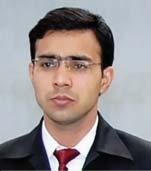
Dr.KuldeepSinghKaswan ispresentlyworkinginSchool ofComputingScience&Engineering,GalgotiasUniversity, UttarPradesh,India.HiscontributionsfocusonBCI, CyborgandDataSciences.HisAcademicdegreesandthirteenyearsofexperienceworkingwithglobalUniversities like,AmityUniversity,Noida,GautamBuddhaUniversity, GreaterNoidaandPDMUniversity,Bahadurgarh,hasmade himmorereceptiveandprominentinhisdomain.He receivedDoctorateinComputerSciencefromBanasthaliVidyapith,Rajasthan. HeReceivedDoctorofEngineering(D.Eng.)fromDanaBrainHealthInstitute,Iran.HehasobtainedMasterDegreeinComputerScienceandEngineeringfromChoudharyDeviLalUniversity,Sirsa(Haryana).Hehassupervised manyUGandPGprojectsofengineeringstudents.Hehassupervised2PhD graduatesandpresentlyissupervising4PhD.HeisalsoMemberofComputer ScienceTeacherAssociation(CSTA),NewYork,USA,InternationalAssociationof Engineers(IAENG),HongKong,IACSIT(InternationalAssociationofComputer ScienceandInformationTechnology,USA,professionalmemberAssociationof ComputingMachinery,USA,andIEEE.HehasnumberofpublicationsinInternational/NationalJournalandConferences.Heisaneditor/author,andreview editorofJournalsandBookswithIEEE,Wiley,Springer,IGI,Riveretc.
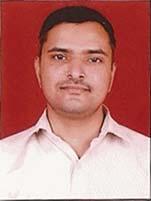
Dr.JagjitSinghDhatterwal ispresentlyworkingasan AssociateProfessor,DepartmentofArtificialIntelligence &DataScienceKoneruLakshmaiahEducationFoundation,Vaddeswaram,AP,India.HecompletedDoctorate inComputerSciencefromMewarUniversity,Rajasthan, India.HereceivedMasterofComputerApplicationfrom MaharshiDayanandUniversity,Rohtak(Haryana).Hehas alsoworkedwithMaharishiDayanandUniversity,Rohtak,
Haryana.HeisalsoMemberofComputerScienceTeacherAssociation(CSTA), NewYork,USA,InternationalAssociationofEngineers(IAENG),HongKong, IACSIT,USA,professionalmemberAssociationofComputingMachinery,USA, IEEE.HisareaofinterestsincludesArtificialIntelligence,BCIandMulti-Agents Technology.HehasnumbersofpublicationsinInternational/NationalJournals andConferences.
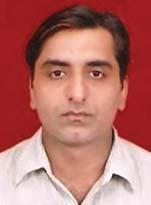
Dr.AnupamBaliyan isworkingasanAdditionalDirector(ComputerScience&Engineering)inDepartmentof ComputerScienceandEngineering,ChandigarhUniversity,Ghraun,Mohali,Punjab(India).Hehasmorethan 22YearsofExperienceinAcademic.HeisMCAfrom GurukulkangariUniversity,MTech(CSE)andPhd(CSE) fromBanasthaliUniversity.Hepublishedmorethan30 ResearchpapersinvariousInternationalJournalindexedat ScopusandESI.HeisLifetimememberofCSIandISTE.He hasbeenchairedmanysessionsinInternationalConferencesacrosstheIndia.He alsopublishedsomeeditedbooksandchapters.HeisalsotheAsst.Editorofsome JournalsthoseareScopusindexed.HisResearchAreaisAlgorithms,Machine learning,WirelessnetworksandAI.
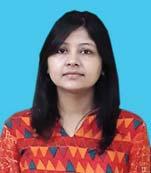
Dr.ShalliRani ispursuingpostdoctoralfromManchester MetropolitanUniversityfromJuly,2021.SheisAssociateProfessorinCSEwithChitkaraUniversity(Rajpura (Punjab)),India.Shehas18+ yearsteachingexperience. SheispursuingpostdoctoralfellowshipfromManchester MetropolitanUniversity,UK.ShereceivedMCAdegree fromMaharishiDyanandUniversity,Rohtakin2004and theMTechdegreeinComputerSciencefromJanardan RaiNagarVidyapeethUniversity,Udaipurin2007andPhDdegreeinComputer ApplicationsfromPunjabTechnicalUniversity,Jalandharin2017.Hermain areaofinterestandresearchareWirelessSensorNetworks,UnderwaterSensor networksandInternetofThings.Shehaspublished/accepted/presentedmore than70+ papersininternationaljournals/conferences(SCI+Scopus)and edited/authoredfivebookswithinternationalpublishers.Sheisservingasthe associateeditorofIEEEFutureDirectionsLetters.Sheisservingasaguesteditor inIEEETransactiononIndustrialInformaticsandElsevierIoTJournals.Shehas alsoservedasreviewerinmanyrepudiatedjournalsofIEEE,Springer,Elsevier,
IET,HindawiandWiley.ShehasworkedonBigData,UnderwaterAcoustic SensorsandIoTtoshowtheimportanceofWSNinIoTapplications.Shereceived ayoungscientistawardinFebruary2014fromPunjabScienceCongress,Lifetime AchievementAwardandSupervisoroftheyearawardfromGlobalInnovation andExcellence,2021.
1.3OriginofQuantumComputing
Sometypesofcomputationsnowbaffletoday’scomputersandwillcontinuetodo soevenifMoore’sLawisextendedindefinitely,althoughquantumcomputersmay giveastrongercorrelationboost.Justimagineyouhaveaphonebookandneedto findacertainnumber.Aconventionalcomputerwouldhavetogothrougheach listinginthephonebooktofindandprovidetheappropriatecontactinformation. Intheory,acomputersystemmightscananentirephonebookinafraction ofasecond,evaluatingeachlinesimultaneouslyandreturningtheresultfar fasterthanamoderncomputer[4].Theterm“complexmathematicaloptimizing” isoftenusedtodescribetheprocessoffindingthebestpossiblecombinationofelementsandanswerstoaproblem.Considerthecostsofbuildingthetallestbuilding intheworld,includingmachinery,food,labor,andpermits.Thechallengeisinfiguringouthowtooptimallyallocateresourceslikemoney,time,andmanpower.As aresult,wemaybeabletoplanformajorprojectswithmoreefficiencywiththeaid ofquantumcomputingifthesefactorsaretakenintoaccount.Softwaredevelopment,supplychainmanagement,finance,internet-basedresearch,genomics,and otherfieldsallfaceoptimizationchallenges.Themostchallengingoptimization problemsinthesefieldsareinherentlywell-suitedforsolutiononaquantummachine[4]butstumpconventionalcomputers.Incontrasttoclassical
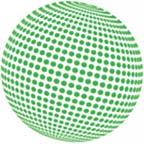
Figure1.2 StructureofbitsandQbits.Source:Adaptedfromhttps://images.app.goo.gl/ DeYCU9A7TeJvV5c16Lastaccessed25Oct2022.
computers,whichrelyalmostentirelyontechnologicaladvancesintransistors andmicrochips,quantumcomputersmayevolveinwaysthatclassicalcomputers cannot.Inquantumcomputers,transistorsarenotutilized(orclassicalbits). Substitutingqubitsforbits.Inaquantumalgorithm,qubitsserveasthebasic buildingblocksforpatternrecognition.TheexampleisshowninFigure1.2.
Qubitsmaytakeonthecharacteristicsofeithera0ora1,ortheycanhaveboth atthesametime.Morechoicesexisttogetaccurateresultsquicklywhiledoing computations.Inaddition,quantumentanglementandsuperpositionaretwo importantstatesofmatteronwhichquantumcomputersdepend.Whenapplied tocomputing,thesephysicalpropertieshavethepotentialtogreatlyincreaseour abilitytodoverylargecomputations[5].
AlthoughRigettiComputing’s19-qubitdevicesarethemostpowerfulinthefield ofquantumcomputing,butafter2019,thebusinessismovingon128-qubitcircuit. ButascanbeseeninTable1.1,theracetobuildthemostadvancedquantum computerwiththemostqubitshasbeengoingonsinceatleastthelate1990s.
Table1.1 Quantumcomputinggettingmorepowerful.
YearLabsQ-bits
1998IBM,Oxford,Berkeley,Stanford,MIT2 2000TechnicalUniversityofMunich7
2006InstituteforQuantumComputing12 2008D-WaveSystem28 2016IBM50
2018Google72
2020Rigetti128
1.4HistoryofQuantumComputing
Conjugatecodingwasfirstdevelopedinthe1960sbyStephenWiesner.Inthe 1970s,JamesParkestablishedtheno-cloningtheoremusinghisformulation. AlexanderHolevoprovedwhatisnowknownasHolevo’stheorem,orHolevo’s bound,inapaperthatwaspublishedin1973.Thistheoremstatesthateven though n qubitsmaystoremorerelevantdatathan n classicalbits,only n conventionalbitsareobtainable.Thisisdespitethefactthat n qubitsmaystore moreinformationthan n classicalbits.
ResearchconductedbyCharlesH.Bennettdemonstratesthatitisfeasibleto carryoutcomputinginabackward-compatiblemanner.
● In1975,R.P.Poplavskiipublished(inRussian)thermodynamicalmodelsof informationprocessing.Thisworkhighlightsthecomputationaldifficultiesof reproducingquantumsystemsonclassicalcomputersowingtothefactthatthe superpositionprincipleisatplay.
● In1976,thePolishmathematicianandphysicistRomanStanislawIngarden publishedQuantumInformationTheoryinthejournal ReportsonMathematicalPhysics.Ingarden’spaper“1976QuantumInformationTheory.”Thisstudy, whichwasoneoftheearlyeffortstobuildquantumsynchronizationtheory, demonstratesthatthetraditionalShannoncommunicationtheorycannot simplybetranslatedintothequantumsituation.Thiswasoneoftheearliest attemptstoestablishquantumentanglementtheory.However,aquantum entanglementtheory,whichisawideexpansionofShannon’stheory,ispossibletoconstructwithintherepresentationofanexpandedsubatomicparticles ofopensystemsandageneralizedideaofexplanatoryvariablesthatisboth broadandimprecise(theso-calledsemi-observables).
PaulBenioffiscreditedwithdevelopingtheveryfirstcomputermodelbased onquantumphysicsinthe1980s.Inthispaper,Benioffpavedthewayforfurther researchinquantumcomputingbylayingthegroundworkforfutureworkinthe fieldbyproposingaSchrodingerequationdescriptionofTuringmachines.This demonstrationshowedthatacomputercouldoperateinaccordancewiththerules ofquantumphysics.TheworkwasfirstshowntothepublicinJune1979,andfour monthslater,inApril1980,itwaspublished.YuriManinpresentsasynopsisof thefieldofquantumcomputinginthisarticle.
ThereversibleToffoligate,withtheNOTandXORgates,formsthefoundation ofauniversalsetthatisusedforbidirectionalclassicalcomputing.
InMay1980,theMassachusettsInstituteofTechnology(MIT)playedhostto theFirstConferenceonthePhysicsofComputation.Atthisconference,prominentfiguresinthefieldofcomputing,suchasPaulBenioffandRichardFeynman, exploredquantumcomputing.Benioff’scurrentinvestigationisanexpansionof
1IntroductionofQuantumComputing
hisearlierworkfrom1980,whichdemonstratedthepossibilitythatacomputer mayfunctioninlinewiththeprinciplesofquantumphysics.Quantummechanical Hamiltonianmodelsofdiscreteprocessesthatdeletetheirownhistories:applicationtoTuringmachines,”thetalk’stitlesaid.Duringhispresentation,Feynman saidthatitseemedtobedifficulttoproperlymimictheevolutionofaquantum particleonaregularcomputer.Inadditiontothat,helaidthefoundationforthe contemporaryquantumalgorithm.
PaulBenioffcontinuedtodevelophisconceptofaTuringmachinethatwas basedonquantummodelingin1982.WilliamWootters,WojciechZurek,and DennisDieksallindependentlyrediscoveredtheno-cloningtheoremataround thesametime.
In1984,CharlesBennettandGillesBrassardresorttoWiesner’sconjugatecodinginordertodistributecryptographickeysinanuncompromisedmanner.
In1985,whileworkingatOxfordUniversity,DavidDeutschwasthefirstperson toconceptualizeauniversalquantumcomputer.Auniversalquantumcomputer, muchlikeamulticlasssupportvectormachine,hasthepotentialtosuccessfully imitateanyotherquantumcomputerwithjustapolynomialamountoflatency (Church–Turingthesis).
YoshihisaYamamotoandK.Igeta,twophysicists,developedthefirstpractical implementationofaquantumalgorithmin1988.Theiralgorithmutilized Feynman’sCNOTgateasoneofitscomponents.Theirsystemutilizesbothatoms andphotons,whichpositionsitasaforerunnerofpresentquantumcomputing andnetworkingprotocols.Theseprotocolsemployphotonstotransportqubits, whileatomsareutilizedtocarryouttwo-qubitoperations.GerardJ.Milburn demonstratesaquantum-opticalvariantoftheFredkingateinhispresentation.
● In1989,researchersattheSahaInstituteofNuclearPhysicsinKolkata,ledby BikasK.Chakrabarti,proposedthatparticlephysicsactivitycouldbeusedto learntonavigateroughenergyenvironmentsbytunneling(ratherthantrying toclimboverusingthermalvibrationalmodes)toescapefromlocalminimaof crystallineformsystemswithtallbutthinbarriers.Thiswasdoneinaneffortto breakfreefromthelocaloptimalsolutionofcrystallizedsystemswithlargebut smallbarriers.
● In1991,ArturEkertoftheUniversityofOxfordexpandedupontheideaof entanglement-basedencryptedcommunicationproposedbyDavidDeutsch.
● DavidDeutschandRichardJozsaproposedanumberofproblemsin1992that couldbequicklysolvedonaquantumsystemwiththeassistanceofthepredeterminedDeutsch–Jozsaautomatedsystem,butforwhichtherearenofeasible categoricalimperativesusingclassicalmethodology.Thisproblemwasreferred toasthe“Deutsch–Jozsaalgorithmproblem.”Itwasthepossiblefirstdiscovery ofitskindintherealmofquantumcomputing,anditdemonstratedthatqubits














